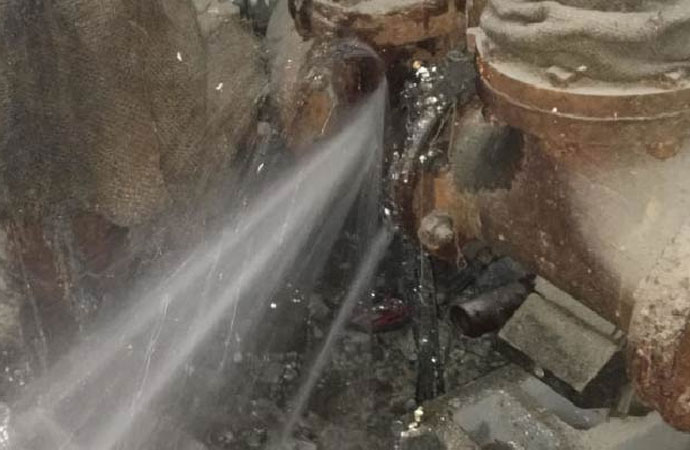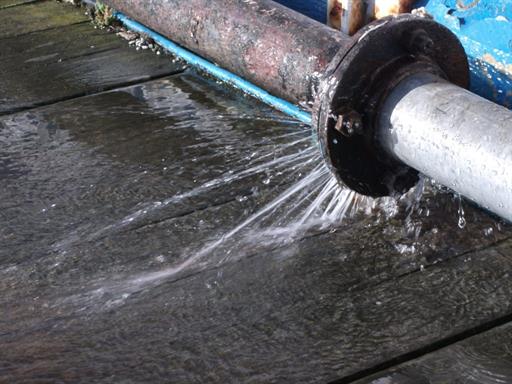Quick Overview: Identifying as well as Repairing Burst Pipes in your house
Quick Overview: Identifying as well as Repairing Burst Pipes in your house
Blog Article
The article author is making a few good points on the subject of How to install a dishwasher safely overall in this great article down the page.

A ruptured pipeline is a significant emergency; you can only stand as you view water you pay dearly to rejoin with the planet. In worse cases, you see a swimming pool on your kitchen area floor, which is a wonderful journey danger, especially if you have children around. If the pipe that burst remained in your wall surfaces, problem: you may need to repaint that whole area.
How can a calamity like a ruptured pipeline be avoided as well as handled? Well, by listening to your specialist emergency plumbing technicians and complying with these guidelines.
Just how do I understand when my pipes have ruptured?
Varying water stress
Pipes do not simply burst in a day. You may have seen that your kitchen area faucet or shower doesn't run quickly when you turn the faucet. It might pause for a couple of seconds and afterwards blast you with more force than usual.
In various other instances, the water might seem normal in the beginning, then decrease in stress after a few secs.
Wet wall surfaces as well as water discolorations
Before a pipeline bursts, it will leak, the majority of times. If this consistent dripping goes unnoticed, the leakage may finish into a large gash in your pipeline. One easy method to avoid this emergency is to watch out for wet wall surfaces ad water spots. These water discolorations will lead you right to the leakage.
Puddles under pipelines as well as sinks
When a pipe ruptureds, the outflow develops a puddle. It may show up that the puddle is expanding in size, as well as despite the number of times you mop the puddle, in a few mins, there's another one waiting to be cleansed. Often, you may not have the ability to trace the puddle to any kind of visible pipelines. This is an indicator to call a professional plumber.
Untraceable dripping noises
Pipeline bursts can occur in one of the most unpleasant areas, like within concrete, inside walls, or under sinks. When your house goes silent, you might be able to listen to an annoyingly consistent trickling noise. Also after you've inspected your shower head and also kitchen faucet, the dripping may proceed.
Dear visitor, the leaking might be originating from a pipe inside your wall surfaces. There isn't much you can do concerning that, other than tell a professional plumber.
Turn off the Water
When water ices up, it increases in volume by regarding 9 percent. As well as it increases with incredible pressure: The stress inside pipes may go from 40 pounds per square inch to 40,000 psi! No pipe can hold that much stress, so it bursts. The break might occur where the ice forms, but more often, it happens where water pressure discovers a weak point in the pipeline. That might be inches or even feet from the frozen area. Find the water shutoff valve as well as shut off the water to avoid even more damages. You could additionally require to shut off the electricity as well, depending on where the leaks occurs as well as just how large it is.
Infected water
Many individuals think a ruptured pipeline is a one-way electrical outlet. Fairly the contrary. As water spurts of the hole or gash in your plumbing system, contaminants find their way in.
Your water may be contaminated from the source, so if you can, check if your water tank has any problems. However, if your drinking water is supplied and also cleansed by the city government, you ought to call your plumber right away if you see or smell anything funny in your water.
What do I do when I identify a ruptured pipeline?
Your water meter will continue to run even while your water wastes. To minimize your losses, find the major controls as well as turn the supply off. The water mains are an above-ground framework beside your building.
How to Fix & Detect a Leaking Pipe
How Do I Know if a Pipe is Leaking?
Leak detection tests can help you determine if your pipe has a leak. Even if you don’t see an apparent leak, you should still conduct leak detection tests regularly to save water and money—and prevent major damage to your home.
Water meter. It can be helpful to figure out what your usual water meter usage numbers are and then monitor them regularly. To monitor your meter, first, turn off all water faucets in your home. Check the meter and write down the numbers. In a few hours, check the meter again. If the numbers have changed, you have a leak. Water gauge. Use a water gauge to test your water pressure. Your showerhead should produce a certain amount of water pressure based on its model and design. If the pressure is lower than it is supposed to be for that specific showerhead, your home likely has a leak. Puddles. Look inside your bathroom, laundry, and kitchen sink cabinets. Puddles around the cabinets or around toilets, tubs, showers, and washing machines indicate the presence of a leaking pipe. You may also notice loose tiles, peeling or flaking paint, or mold caused by water accumulation. Napkin test. Even if you don’t see any puddles, you may still have a leak. You can test for water leaks in the bathroom, laundry, and kitchen by wiping below-sink connections with a napkin, paper towel, or piece of toilet paper. If it becomes damp, you probably have a leaking pipe under the sink. Discolored walls. Walls that are discolored—usually with brown or yellow stains—or bulging might mean that they have been impacted by water damage caused by a leaking pipe. Smell. A leaky pipe will create sitting water, and over time, that water may develop a musty smell. If your home smells musty, but you can’t locate the source, it may be due to a leak. Steps for Fixing a Leaking Pipe
A leaky drain can be remedied by tightening the pipe base, replacing the drain seal, caulking the rim, and tightening the pipe nut. Similarly, a leaking toilet pipe can be treated by tightening the packing nut. You may also need to replace the valve. A leaky faucet may just need tightening or replacement of the washers. If that doesn’t work, consider replacing your faucet. If your pipe has a hole in it, you may want to use a pipe leak sealer or pipe leak tape. This quick fix for water pipe leaks can also temporarily fix a copper pipe leak. https://www.ahs.com/home-matters/quick-tips/how-to-tell-if-pipes-are-leaking/

We were brought to that article about How to Prepare for Your Dishwasher Installation through a good friend on another blog. Enjoyed our review? Please share it. Help another person find it. Thanks a lot for your time. Kindly check up our website back soon.
Go Deal Now
Report this page